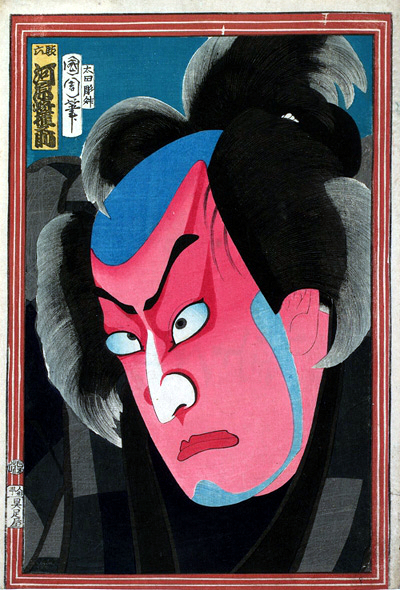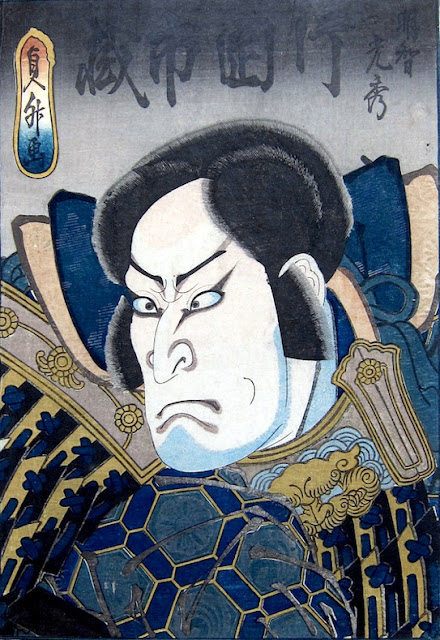 |
| Toyohara Kunichika - Actor Kawarazaki Gonnosuke as Daroku - approx. 1869 |
For Toyohara Kunichika (1835-1900), kabuki was a great passion and his most important works were yakusha-e. With one foot in the Meiji era, he was one of the last ukiyo-e masters.
This print is Actor Kawarazaki Gonnosuke as Daroku, and was made about 1869. While the title, as well as literature to which I have access, only says Kawarazaki Gonnosuke, this most likely is Kawarazaki Gonnosuke VII, although I am not entirely certain of the number.
The picture is a yakusha-e, a portrait of a kabuki actor, but also an okubi-e, which is the term for "big head" portraits. The colours illustrate an innovation within ukiyo-e during Kunichika's career: the introduction of aniline colours to Japan. Strong red, blue, and purple aniline shades became common in prints, and they were sometimes exaggeratedly used in the last phase of ukiyo-e, during the Meiji era.
In Kabuki, red make-up indicates anger, forcefulness, and obstinacy.




 .
.








